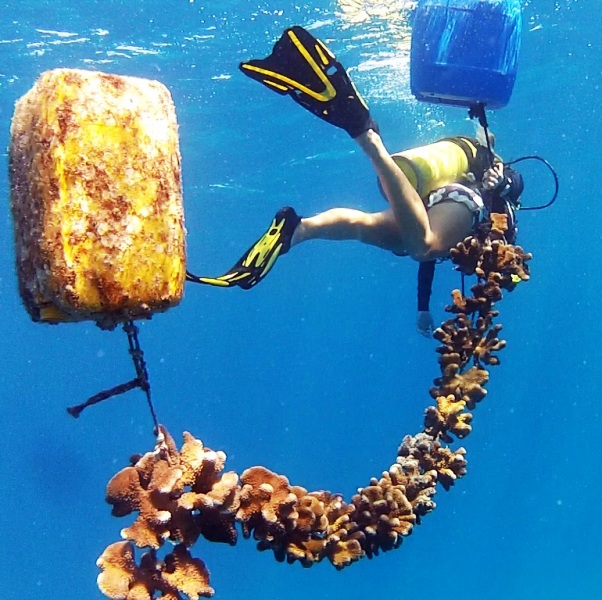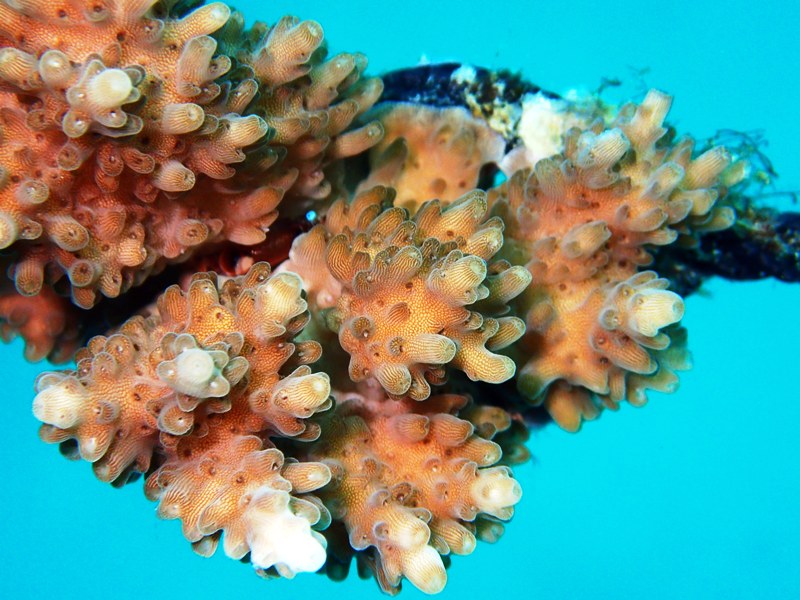The pioneers of coral transplantation |02 July 2018
It takes sturdy sea legs, perfect timing and the precision of a drill to transplant corals. Not only do you need good weather conditions to seamlessly move a rope fully laden with corals to a transplantation site, but also the perfect mix of cement to ensure that corals hold to the reef when they are planted.
Fortunately, the Reef Rescuers team at Nature Seychelles are old hands at this. The organisation’s coral reef restoration project is in its eighth year now. The team has raised, nursed and transplanted thousands of fragments of corals in degraded reef around Cousin Island Special Reserve.
The transplantation work is arduous, requiring nimble fingers and plenty of man hours, but it’s truly rewarding. Reef Rescuers Paul Anstey and Chloe Shute can both attest to this. They just completed a transplantation in the last few months.
First, they towed their coral colonies by boat from an underwater nursery to the planting site, with the help of their skipper Jacques.
An important feature of coral gardening - the type of reef restoration carried out by Nature Seychelles - is to have nurseries close to the reef to be restored.
“This helps to successfully move the 24m rope, fully laden with corals,” says Paul.
“Thankfully, we have some help. We attach several jerry cans to the coral rope and fill them with air to provide buoyancy in the water. A secondary towing rope attached to the coral rope and to the boat also helps,” he adds.
To stick the corals to the reef the team uses a combination of marine cement and a special hardening agent that binds the cement together and allows it to set quickly underwater.
The mixing of the cement itself requires some accuracy.

“One member of the team carefully measures out the correct ratio of cement and hardening agent in a bowl, while the other adds small amounts of fresh water. It is critical to produce the perfect mixture: too little and the cement is dry and difficult to apply and too much and it breaks down underwater!”
After 15 minutes of vigorous mixing, moulding and even punching - it’s both a workout and a great way to release any frustration - then it’s ready to be bagged in handy catering bags used for piping cakes and other baked goods.
Each diver then cuts a section of rope and swims with it to their own demarcated 5m x 5m plot. Typically, a single diver can transplant 10-15 corals in one dive, depending on the sea conditions of course. Ideally, this happens during the calmer periods in between the monsoons.
The reef can be extremely variable with many holes, crevices and raised features. Before they can cement any corals, they need to find a suitable position for each. Like humans, each individual coral grows with a slightly different size and shape. Therefore, finding an ideal location for them is like an underwater game of Tetris, carefully considering each colony until you find one that fits.
Using a scrubbing brush, an area is cleaned of any sediment and underlying turf algae, before planting. Over the next three months or so, the coral will continue to rapidly grow, cloning its cells to produce new tissue and self-attach itself to the reef. At this point, the cement’s job is complete!





